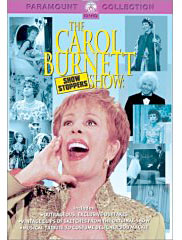 |
 |
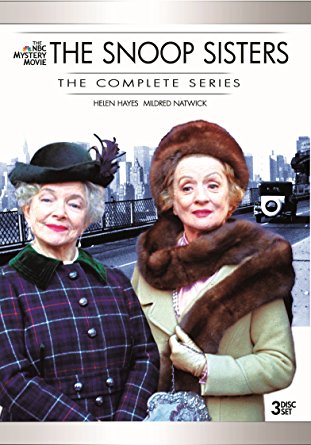
|
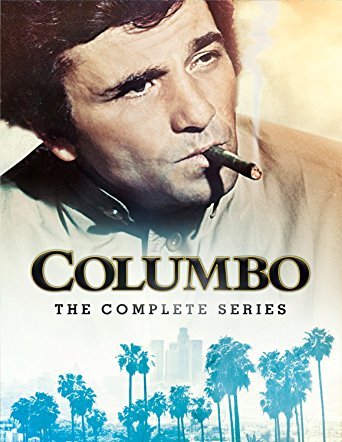 |
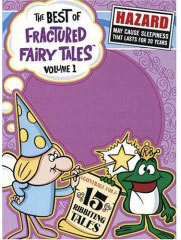 |
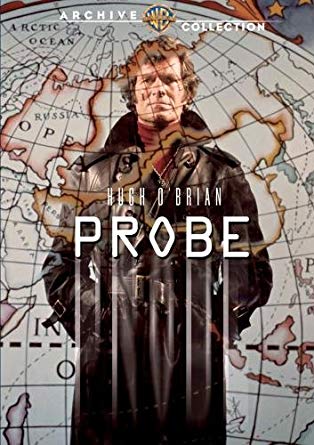 |
|
 Forty years ago, the critics howled! by Sam Hieb
"If I know Jethro, he went to eatin' when he was a baby," Jed replied. Could anything be funnier? I'll share my favorite Hillbillies line, but not before discussing the phenomenon of the extended Clampett family's descent upon Beverly Hills in their 1921 flatbed after striking it rich when an oil well sprouted in their front yard back home in the Ozarks. The Hillbillies climb to the top was one of the swiftest in television history. The show rose to number one only three weeks after its premiere, and by December of '62 was attracting 33 million viewers a week-doubling up the viewers tuning into Perry Como's Kraft Music Hall and Gene Kelly's comedy-drama based on the popular movie Going My Way. The show hasn't gone out of style since. It dropped out of the top twenty only during its last season in 1971, and has remained popular in syndication and on cable, drawing up to sixty million viewers a week. Upon their introduction to Jed, Granny, Jethro and Ellie May, however, the critics held their noses as if the Hillbillies hadn't had a lye soap in a while. Newsweek called "the most shamelessly corny show in years"; Time said "the pone is the lowest form of humor...a program that is dedicated to finding out how many times the same joke can be repeated." The New York Times was no kinder, writing "The Beverly Hillbillies is steeped in enough twanging guitar and rural no-think to make each half-hour seem like sixty minutes." Social critic David Susskind was alarmed by the subject matter of the show that he called upon "the few intelligent people left" to write their congressman and complain. The federal government could relocate the Clampetts back in the Ozarks on their way to integrate public schools in the South. IT'S A HIT!
In spite of what the critics believed, the success of the show was no accident. Creator Paul Henning was well aware that his proposed sitcom would not be the first to portray down home people. But the characters in The Real McCoys and The Andy Griffith Show were own their turf. Why not uproot some rural types and place them in the middle of riches and wealth? CBS executives, didn't see the point at first, but Henning convinced them with a pitch over lunch at The Brown Derby.
It would not lend credibility to the characters, for instance, for viewers to see Max Baer attending a Hollywood premiere dressed in a tuxedo or to see Buddy Ebsen lounging on his sixty-foot yacht. Henning and the network butted heads one last time after the show went on the air. CBS executives felt the show lacked a moral message, didn't tug at the heartstrings enough. That was the point, Henning told them. The Clampetts' backwoods moral superiority would ruin the theme of the show, which was to spoof the frivolous, self-absorbed Beverly Hills lifestyle, not pass judgment on it, much in the same way Norman Lear would treat the urban blue-collar lifestyle with All in the Family. It was simply a fact of life that there are people like the Drysdales and people like the Clampetts in the world. Why not bring them together, not in some voyeuristic experiment to prove who's better but just to have a laugh?
Everyone knows what happened the Friday following the Times Magazine article, and years later author Steven D. Stark would note another strange phenomenon in the midst of that tragedy. "Seven regular episodes of the Hillbillies immediately following the Kennedy assassination grace the list of the most widely watched half-hour shows in TV history," Stark wrote in his book Glued to the Set. Now, my favorite line from the Hillbillies. In one of the early episodes, Jed takes Jethro to an exclusive private school to re-enroll him in the sixth grade. When they announce their intentions to the headmaster, she cooly says 'You dooo knoooow that we charge a tuition." "If that means it costs, money, I can pay," Jed says, "as long as it don't cost over $25 million." If that's not the last laugh... |
The Beverly Hillbillies
"'The Hillbillies of Beverly Hills' has a slightly different opening and titles, then goes into the exact 1st episode - except for a different opening shot of the bank (with different name) and sound mix - with a couple of scenes having slightly longer dialogue in the pilot.
"There's
another new scene where Ellie Mae goes on a date with a guy from the
bank. Then the camera pulls back and Drysdale is revealed as talking
to his shrink. These three scenes never wound up in the final episodes."
NOW
ON DVD! "Now come along
and visit with the Clampett fam-i-lee as they learn the simple pleasures
in the hills of Bever-lee. The folks who bring you products are the
sponsor of the week, the best to you each mornin', fresh from Battle
Creek. K E double LL O double good - Kelloggs best to you!"
"There were
also a couple of commercials that ran during the show with Jed and Jethro
enjoying a Winston cigarette (another sponsor) and yuckin' it up with
hillbilly humor.
"The pilot
script was written by producer Paul Henning - it's almost word for word
the filmed show. It's even written phonetically as they would have spoken
in the show.
"Exterior filming
at the mansion was not done after the first season because so many people
actually drove up and knocked on the front door asking to meet Granny
- the owner kicked Filmways off the lot after that."
BONUS VIDEO CLIP: Outtakes of Irene Ryan (Granny) recording a fall promotion for a CBS affiliate in Tidewater,Virginia - from 1967 Another TVparty feature with: The Beverly Hillbillies TV
Guide's Beverly Hillbillies Page,
|
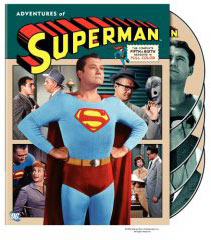 |
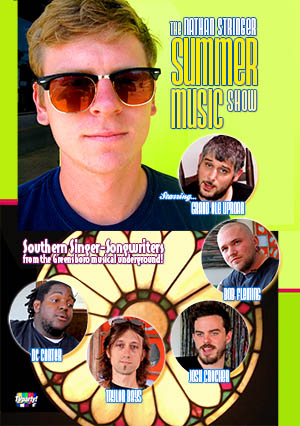 |
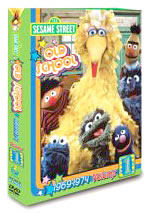 |
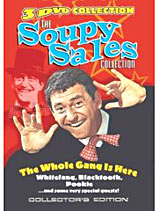 |
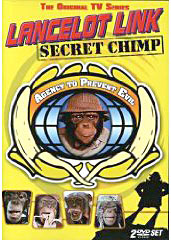 |
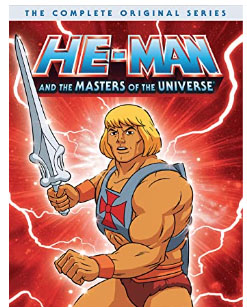 |
|
|
|
||||||||||
| Classic
TV Contact Us / Classic TV DVDs Other Cool TV Sites |
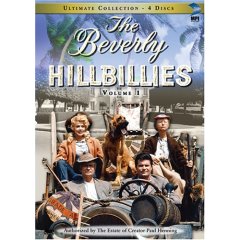
 We
all have our favorite lines from
We
all have our favorite lines from  Never
before in the history of television had there been such a discrepancy
between critical and mass appeal as when the Hillbillies appeared on
CBS on September 26, 1962.
Never
before in the history of television had there been such a discrepancy
between critical and mass appeal as when the Hillbillies appeared on
CBS on September 26, 1962.
 The
viewers begged to differ with such broad intellects, however. Compared
to the twanging guitar on CBS, Perry Como on NBC suddenly became a second
rate crooner belting out the same old tunes and Gene Kelly on ABC was
a washed-up hoofer trying to make it on the tube. Critics continued
to waste valuable print space scratching their heads over the success
of the most inane show they could imagine.
The
viewers begged to differ with such broad intellects, however. Compared
to the twanging guitar on CBS, Perry Como on NBC suddenly became a second
rate crooner belting out the same old tunes and Gene Kelly on ABC was
a washed-up hoofer trying to make it on the tube. Critics continued
to waste valuable print space scratching their heads over the success
of the most inane show they could imagine.
 When
production began, the show boasted one of the costliest sets in television,
with the 27-inch deep cement pond costing $15,000 alone. After R.J.
Reynolds agreed to put up its advertising dollars following a private
screening of the pilot in New York, Henning and the network embarked
on a clever PR campaign, bombarding the public and critics with ads
for the show while keeping the private lives of the actors top secret.
When
production began, the show boasted one of the costliest sets in television,
with the 27-inch deep cement pond costing $15,000 alone. After R.J.
Reynolds agreed to put up its advertising dollars following a private
screening of the pilot in New York, Henning and the network embarked
on a clever PR campaign, bombarding the public and critics with ads
for the show while keeping the private lives of the actors top secret.
 After
a year, the media finally got it right. "Folks who look down their noses
at TV's number one show have it all wrong. In truth, it mocks pretension-a
spectacle the great American public has always enjoyed," wrote The New
York Times Magazine on November 17, 1963. The magazine grudgingly bestowed
some critical praise upon the show, but still treated it as some strange
phenomenon enjoyed by Americans with the taste and intelligence of 12
year-olds.
After
a year, the media finally got it right. "Folks who look down their noses
at TV's number one show have it all wrong. In truth, it mocks pretension-a
spectacle the great American public has always enjoyed," wrote The New
York Times Magazine on November 17, 1963. The magazine grudgingly bestowed
some critical praise upon the show, but still treated it as some strange
phenomenon enjoyed by Americans with the taste and intelligence of 12
year-olds.

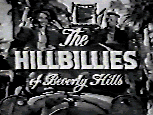 "I
was wondering if you knew about the Beverly Hillbillies pilot that has
different music (more bluegrass) and a totally different laugh track/sound
mix than the "Clampetts Strike Oil" show?
"I
was wondering if you knew about the Beverly Hillbillies pilot that has
different music (more bluegrass) and a totally different laugh track/sound
mix than the "Clampetts Strike Oil" show?
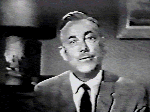 "At
the final scene where the Clampetts run up the hill, the
"At
the final scene where the Clampetts run up the hill, the 

